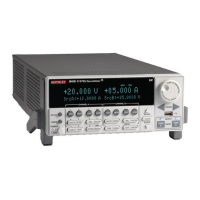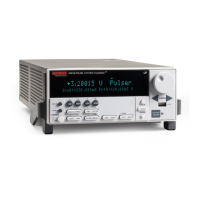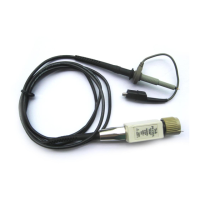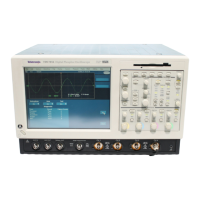When reading a register, a numeric value is returned. The binary equivalent of this value indicates
which bits in the register are set. For details, see Reading registers (on page 12-15). For example, the
following command reads the Questionable Status Enable Register:
print(status.questionable.enable)
For more information about the Questionable Status Registers, refer to Status register set contents
(on page 12-1) and the figures in this section.
Measurement Event Registers
As shown in the Measurement event registers (on page 12-7) of the status model, there are eight
register sets associated with measurement event status. Commands are summarized in Status
register set contents (on page 12-1). Note that bits can also be set by using numeric parameter
values. For details, see Programming enable and transition registers (on page 12-14).
For example, either of the following commands sets the VOLTAGE_LIMIT enable bit:
status.measurement.enable = status.measurement.VOLTAGE_LIMIT
status.measurement.enable = 1
When reading a register, a numeric value is returned. The binary equivalent of this value indicates
which bits in the register are set. For details, see Reading registers (on page 12-15). For example, the
following command reads the Measurement Event Enable Register:
print(status.measurement.enable)
This register set feeds to bit B0 (MSB) of the Status Byte. The bits used in the Measurement Event
Registers are:
• Bit B0, Voltage Limit (VLMT): Set bit indicates that the voltage limit was exceeded. This bit is
updated only when either a measurement is made or the smuX.source.compliance attribute
is read.
• Bit B1, Current Limit (ILMT): Set bit indicates that the current limit was exceeded. This bit is
updated only when either a measurement is made or the smuX.source.compliance attribute
is read.
• Bit B7, Reading Overflow (ROF): Set bit indicates that an overflow reading has been detected.
• Bit B8, Buffer Available (BAV): Set bit indicates that there is at least one reading stored in
either or both nonvolatile reading buffers.
• Bit B11, Output Enable (OE): (2601B, 2602B, 2604B) Set bit indicates that output enable was
asserted.
Bit B11, Interlock (INT): (2611B, 2612B, 2614B, 2634B, 2635B, 2636B) Set bit indicates that
interlock was asserted.
• Bit B13, Instrument Summary (INST): Set bit indicates that a bit in the Measurement Instrument
Summary Register is set.
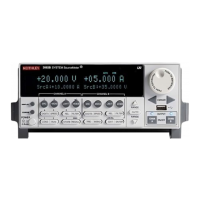
